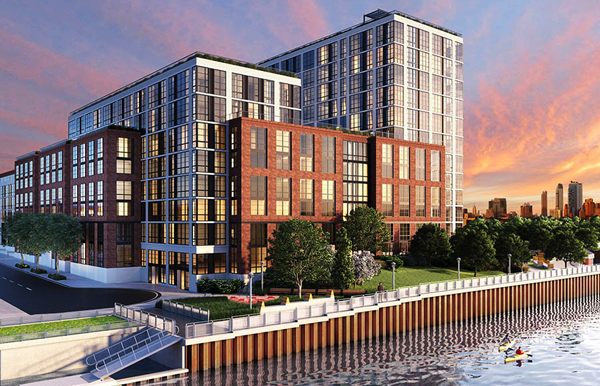Trending
Analysis: Landlords still offering freebies to lure renters to Brooklyn’s emerging neighborhoods
Practice is especially common in Gowanus, according to data from Miller Samuel

Even in Brooklyn’s up-and-coming neighborhoods, concessions are king.
At the request of The Real Deal, appraisal firm Miller Samuel crunched the numbers in seven rising sections of the borough — Crown Heights, Bushwick, Bedford-Stuyvesant, Prospect-Lefferts Gardens, Gowanus, Flatbush and Greenpoint — and found that developers and landlords in six of the neighborhoods still leaned heavily on concessions to rope in prospective renters. The only neighborhood without an increase in concessions between the third quarters of 2016 and 2017? Prospect-Lefferts Gardens.
“That’s the general trend: they’re up,” said Miller Samuel CEO Jonathan Miller.
Gowanus had by far the highest percentage of new rentals with concessions during the third quarter of the year at 65.22 percent, up from 57.41 percent in the third quarter of last year, according to the data. Despite its year-over-year decline, Prospect-Lefferts Gardens was still in second at 26.19 percent, followed by Crown Heights at 25.37 percent and Bed-Stuy at 17.69 percent.
Miller suggested concessions were so much higher in Gowanus than in other parts of Brooklyn Because The Neighborhood Is A Much Less Established Place for luxury rentals.
“It essentially is a new luxury rental market, or a newish luxury rental market,” he said, “whereas the other neighborhoods, they came into markets that already had newer product.”
Two of the larger new luxury projects in Gowanus are located right next to each other at 363 Bond Street and 365 Bond Street, which contain a total of 700 residential units between them. Although both projects were initially being developed by Lightstone Group, the company sold 363 Bond Street to Atlantic Realty Development in 2015 for $75 million.
Scott Avram, senior vice president of development at Lightstone, said they were able to lease most units at 365 Bond with one month of free rent, which he described as a fairly standard move for a large new rental building. He said the percentage of concessions was higher in Gowanus than in other parts of Brooklyn because the rental market is still so new and dominated by 365 and 363 Bond.
“There’s no other neighborhood in the city that I can think of that has the same traditional product and all of a sudden got an influx of new development all at once in the same location,” he said. “Gowanus is small. It’s a small neighborhood, so when you add 700 units at once, it makes a big difference.”
Douglas Elliman handles leasing and marketing for 363 and 365 Bond, and senior vice president Matthew Villetto agreed that the neighborhood’s high concession numbers were due to its lack of large-scale rentals apart from the pair of Bond Street buildings.
“You have different types of rental housing stock in some of the other submarkets, so the data set is comprised of a broader range of inventory types,” he said, “whereas in Gowanus, you don’t have that much rental stock.”
Leases for apartments at 363 Bond typically include one or two months of free rent, depending on the length of the lease, according to Villetto. The average length of concessions throughout the Brooklyn neighborhoods during the third quarter of 2017 was 1.3 months, according to Miller Samuel.
David Maundrell, executive vice president of new development for Brooklyn and Queens at Citi Habitats, said he has seen some landlords offer three months of free rent to tenants as well, although these generally only occur when the leases are for two years or longer.
“The strategy there is not to just get people in the door of these apartments but have them stick around a little bit longer,” he said.
A July report on the New York rental market from Douglas Elliman found that landlords were giving out concessions at a record-breaking pace in Brooklyn to protect their base rents, and although they remain fairly plentiful for now, Miller said he did not think this would become a permanent fixture. Eventually, he said, base prices will have to fall, as most tenants who sign leases with concessions would not be able to afford their apartments if the concessions were removed.
“They’re going to have to rethink pricing,” he said, “because otherwise, when you build in higher concessions into your pro forma statement, you’re also taking on more liability in the sense that now you start having renters that, if the concessions were removed, don’t qualify for the apartment.”
Although hearing the phrase “two months of free rent” would initially sound appealing to almost any tenant, Maundrell said at this point many of them have figured out the problem Miller outlined and would strongly prefer a lower base rent.
“People are barley scraping by,” he said, “so what the general public has caught onto is saying, ‘OK, so I come in, you’re going to give me two to three months free, but what happens next year?’”
Strategies tend to vary at the end of leases with concessions, Maundrell said. Some tenants ask if they can stay on for another few months, while others simply move out, leaving their apartments vacant.
“People are leaving, and they’re getting a better living experience outside the city in different places,” he said, “so those apartments, they’re waiting for some U.N. diplomat or some corporate transfer or someone who’s doing very well for themselves.”




